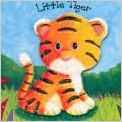-
Little Tiger: Little Cuties
Mark Marshall
Board book (Snap Productions Ltd, March 1, 2012)None
-
The Three Little Pigs
Marshall
Hardcover (Weston Woods, May 16, 1990)None
-
I Can Jump Puddles
Alan Marshall
Paperback (Addison-Wesley Longman Ltd, July 1, 1980)None
-
Little Frog: Little Cuties
Mark Marshall
Board book (Snap Productions Ltd, March 1, 2012)None
-
Reptiles and Amphibians
Anne Marshall
Paperback (Miles Kelly Publishing Ltd, March 1, 2004)None
-
Little Lamb: Little Cuties
Mark Marshall
Board book (Snap Productions Ltd, March 1, 2012)None
-
Horses and Ponies
Anne Marshall
Paperback (Miles Kelly Publishing Ltd, Feb. 1, 2005)None
-
Dinosaurs
Anne Marshall
Paperback (Miles Kelly Publishing Ltd, March 1, 2003)None
-
Birds
Anne Marshall
Paperback (Miles Kelly Publishing Ltd, March 1, 2003)None
-
Little Lion Lost
Mark Marshall
Paperback (Gullane Children's Books, June 1, 2007)New
-
Big Animals
Anne Marshall
Paperback (Miles Kelly Publishing Ltd, Feb. 1, 2005)None
-
Why Blacks Don't Have Game And How We Get To Play
Lyle A. Marshall
Paperback (Trafford Publishing, March 17, 2006)This handbook for young African Americans is intended to give them a feeling of self-worth by chronicling many of the contributions of African Americans to American history and to the American way of life in an easy-to-read format. The history of blacks in America has been badly distorted by the motion picture industry and textbooks. Newspapers generally print most of the bad news about blacks and often under-report positive news. This negative information adds to the anger that many young blacks harbor due to their economic plight, and feeds the feeling of hopelessness that they perceive as their future. This book lets them know that they deserve more, based upon their forefathersÕ contributions to America in war and peace and their inherent ability. It then attempts to guide them into a better economic way of life through understandable steps that are attainable. It stresses education as a basic tool for advancement as well as a reparations goal. It then goes through economic steps that can start to decrease the un-American economic gap that should not exist. Its main theme is that they are the progeny of forefathers who have accomplished a great deal, and they owe it to their forefathers to live up to that heritage.